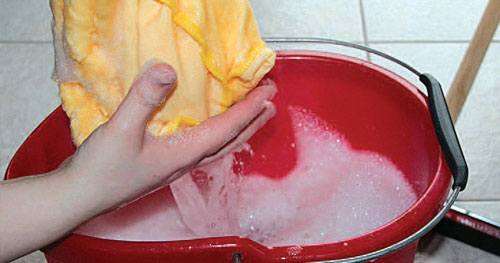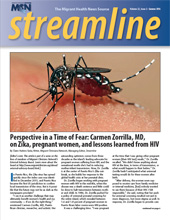Work-related Asthma: Swapping a microfiber cloth for the disinfectant at California schools

[Editor’s note: Please join us for our webinar on work-related asthma with Robert Harrison, MD, MPH, Clinical Professor of Medicine at University of California, San Francisco. He also directs the worker tracking investigation program for the California Department of Public Health. The webinar is September 14th at 1pm ET. Register on our Upcoming Webinars page: http://www.migrantclinician.org/services/education/webinars.html.]
Disinfectants are pesticides. This statement is at the heart of California’s Cleaning for Asthma-Safe Schools (CLASS) project, one of several initiatives in the Golden State aimed at reducing work related asthma resulting from disinfectant and sanitizer use. While chemical safety in the schools has largely centered around weed killers and landscaping chemicals, and cleaning and janitorial supplies, newer cleaning trends and sanitizing habits have resulted in the use of many disinfectants and sanitizers throughout the day in the classroom. Such exposure not only exacerbates existing asthma issues for those present but may trigger new cases for children, teachers, and staff.
“Overuse and misuse of disinfectants is particularly a problem, as these chemicals are pesticides, designed to kill germs,” notes a CLASS fact sheet. “While they are important to protect health in some instances, they contain harmful chemicals, and therefore, should only be used when necessary by staff trained to use them safely.” Notably, asthma has increased across the US. Although focused on schools, the project is relevant to a wide range of occupations in which workers may be exposed to disinfectants that can cause asthma. The National Institute for Occupational Safety and Health (NIOSH) estimates that between 15 and 30 percent of people suffering from asthma either developed it as a result of their exposures in the workplace or have work-exacerbated asthma. Migrants and immigrants in particular may have a greater risk of exposure: language and cultural barriers may inhibit proper training; and fear of immigration status or of job loss may discourage workers from reporting overexposures or other work-related health issues. Immigrant workers are employed in many occupations in which they are exposed to chemicals, dust, exhaust, and other asthma triggers. Be it pesticides in the fields, coal dust in the mines, fumes in the nail salon, diesel exhaust in the shipping warehouse, or second-hand smoke in the restaurant, immigrant workers’ exposures, in a myriad of work environments, may have lifelong health implications.
To address this risk, CLASS has launched the Cleaning for Asthma-Safe Schools Microfiber Pilot Project, in which participating districts will receive asthma-safe microfiber cloths, resources, a how-to guide, and technical assistance, to get teachers to switch to microfiber. Because the cloths are made of fibers roughly 1/100th the size of a human hair, they can pick up germs and dirt, without the use of chemicals. School staff are taught how to clean with the microfiber cloth — as a dry rag, with water, with hand soap and water, or with a third party-certified green all-purpose cleaner, depending on the job — and in the process save themselves and the schoolchildren from exposure to chemicals.
Simultaneously, the newly updated California Healthy Schools Act requires any staff member using disinfectants — teachers, their aides, front-desk staff — to get trained in proper use of disinfectants. The training, provided by the California Department of Pesticide Regulation, is for any staff using pesticides, the Department website reports, which includes weed killers, disinfectant wipes, and sanitizers. The requirement came into effect on July 1st of this year; re-certification is required annually.
Read this article in the Summer 2016 issue of Streamline here!
Sign up for our eNewsletter to receive bimonthly news from MCN, including announcements of the next Streamline.
Return to the Streamline Summer 2016 Table of Contents.
